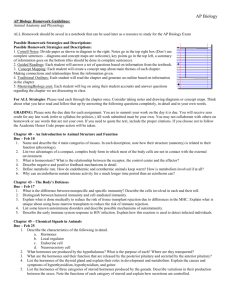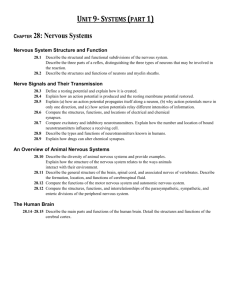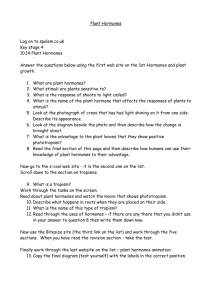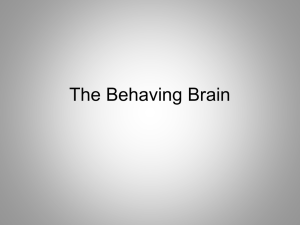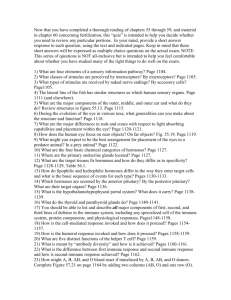External Environment
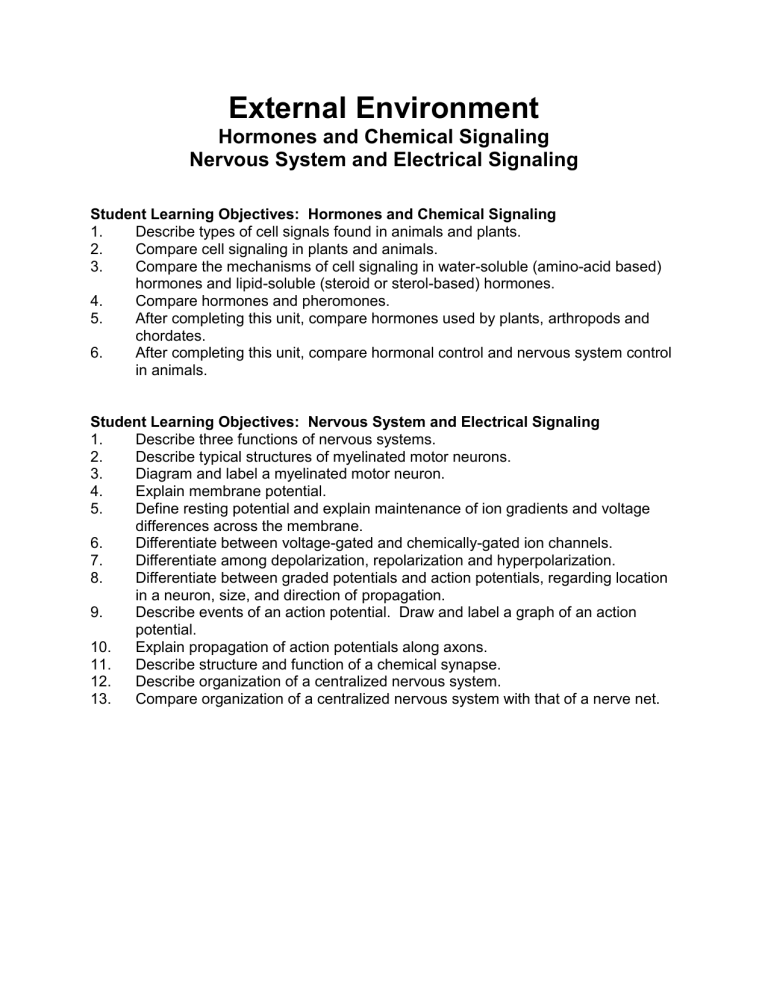
External Environment
Hormones and Chemical Signaling
Nervous System and Electrical Signaling
Student Learning Objectives: Hormones and Chemical Signaling
1. Describe types of cell signals found in animals and plants.
2. Compare cell signaling in plants and animals.
3. Compare the mechanisms of cell signaling in water-soluble (amino-acid based) hormones and lipid-soluble (steroid or sterol-based) hormones.
4. Compare hormones and pheromones.
5. After completing this unit, compare hormones used by plants, arthropods and chordates.
6. After completing this unit, compare hormonal control and nervous system control in animals.
Student Learning Objectives: Nervous System and Electrical Signaling
1. Describe three functions of nervous systems.
2. Describe typical structures of myelinated motor neurons.
3. Diagram and label a myelinated motor neuron.
4. Explain membrane potential.
5. Define resting potential and explain maintenance of ion gradients and voltage differences across the membrane.
6. Differentiate between voltage-gated and chemically-gated ion channels.
7. Differentiate among depolarization, repolarization and hyperpolarization.
8. Differentiate between graded potentials and action potentials, regarding location in a neuron, size, and direction of propagation.
9. Describe events of an action potential. Draw and label a graph of an action potential.
10. Explain propagation of action potentials along axons.
11. Describe structure and function of a chemical synapse.
12. Describe organization of a centralized nervous system.
13. Compare organization of a centralized nervous system with that of a nerve net.
Plants: Flowering Plants (Phylum Magnoliophyta)
External Environment
Student Learning Objectives
1. Name several plant hormones and describe their actions.
For example: a. Describe how plant hormones control seed dormancy and seed germination in plants. b. c.
Describe how plant hormones control phototropism or gravitropism.
Describe the role of plant hormones in terminal bud inhibition and stem elongation. d. Describe the role of volatile molecules (hormones such as jasmonic acid) in chemical signaling between plants and other organisms.
Animals: Phylum Cnidaria
External Environment
Student Learning Objectives
1. Describe nervous systems of cnidarians.
2. Compare nervous systems of cnidarians, flatworms, annelids, arthropods and vertebrates.
Animals: Phylum Platyhelminthes
External Environment
Student Learning Objectives
1. Describe nervous systems of planarians.
2. Compare nervous systems of cnidarians, flatworms, annelids, arthropods and vertebrates.
Animals: Phylum Annelida
External Environment
Student Learning Objectives
1. Describe the nervous system of annelids.
2. Compare nervous systems of cnidarians, flatworms, annelids, arthropods and vertebrates.
Animals: Phylum Arthropoda
External Environment
Student Learning Objectives
1. Name several arthropod hormones and describe their actions.
For example: a. Discuss control of insect development by hormones. b. Discuss role of arthropod hormones in molting.
2. Describe the nervous system of a typical arthropod.
3. Compare nervous systems of cnidarians, flatworms, annelids, arthropods and vertebrates.
Animals: Phylum Chordata
External Environment
Student Learning Objectives
1. Name several vertebrate hormones and describe their actions.
For example: a. Identify hormones produced by the anterior pituitary and name their main actions. Discuss the role of the hypothalamus in the release of hormones from the anterior pituitary. b. Identify hormones produced by the posterior pituitary and name their main actions. Discuss the role of the hypothalamus in the release of hormones from the posterior pituitary. c. d.
Describe regulation of vertebrate metabolic rate by hormones.
Describe regulation of vertebrate blood glucose levels by hormones.
2. Describe nervous systems of vertebrates.
3. Compare nervous systems of cnidarians, flatworms, annelids, arthropods and vertebrates.
